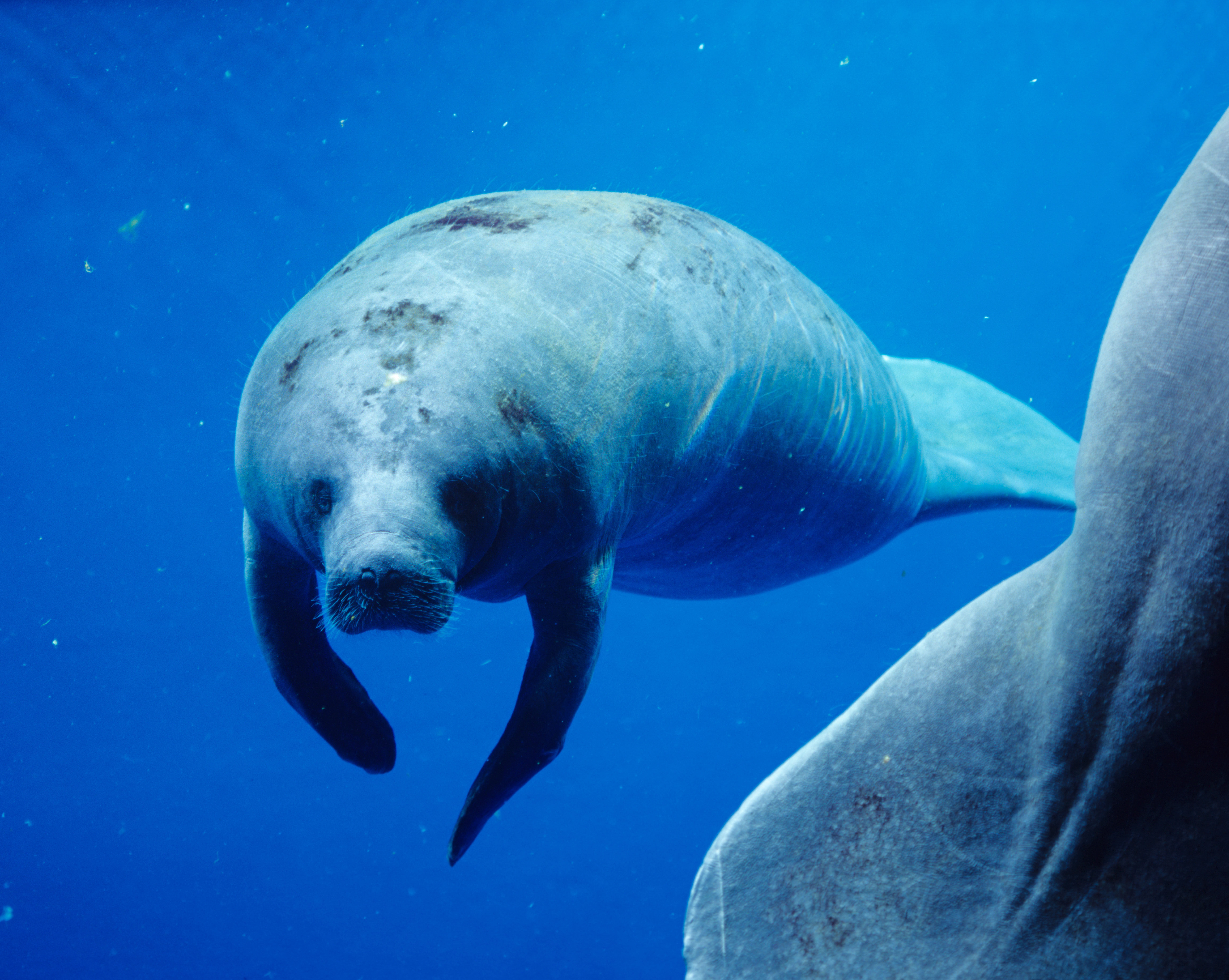Manatee, << MAN uh tee or `man` uh TEE >> , also called sea cow, is a large, plant-eating water mammal. The manatee has light gray to dark gray skin with hairs scattered over its body. It has paddle-shaped front limbs, a rounded tail, and no hind legs. Some manatees reach 13 feet (4 meters) long and weigh more than 3,500 pounds (1,600 kilograms).

There are three species (kinds) of manatees. The West Indian manatee lives along coasts and in rivers from the mid-Atlantic and southeastern United States to northeastern Brazil. It also lives near islands in the Caribbean Sea. The Amazonian manatee lives only in South American rivers. The West African manatee lives in the rivers and coastal waters of West Africa. All manatee species are endangered or threatened, largely due to overhunting, habitat destruction, and accidents with boats.
The manatee has several characteristics that are unusual among mammals. For example, it has mostly solid bones with no marrow, making its skeleton quite heavy. Its lungs stretch horizontally along the body. In addition, manatees are vulnerable to cold. They move to warmer areas when water temperatures drop below 68 °F (20 °C).
The manatee eats mostly a variety of water plants, using its forelimbs and prehensile (grasping) lips to feed. The manatee has only molars (grinding teeth). Unlike other mammals, manatees replace their teeth as they wear out. It takes about seven days for manatees to completely digest food. Most digestion occurs in the intestines, which can reach 130 feet (40 meters) long. A 1,000-pound (450-kilogram) manatee can eat up to 100 pounds (45 kilograms) or more of food a day.
Loading the player...Manatee
Female manatees typically can begin bearing young at age 3 to 5. Males usually reproduce around age 9. A female generally gives birth to one calf every two to three years. Manatees do not mate for life. During breeding, a herd forms consisting of a single female and several to 20 or more males. Mothers carry their young for about one year before giving birth. They typically care for their young for one to two years. Calves nurse underwater from teats behind the mother’s flippers. They start feeding on vegetation after a few weeks, but will continue nursing for a year or more.
